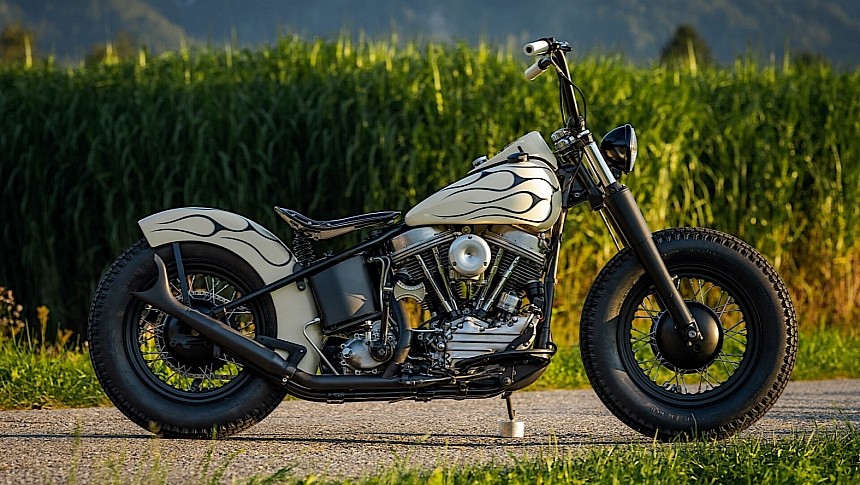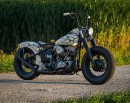No, don't start searching online for tinkering malaria, as that's not a real thing. It's just a fictitious disease used by the guys over at German custom motorcycle maker Thunderbike to describe the original state of a Harley-Davidson Panhead motorcycle they've recently rescued and transformed. And a very effective term, at least when put in context with how the motorcycle looks now.
The Panhead is a golden nugget for custom garages, and one of the most appreciated bikes ever to come out the doors of the Milwaukee bike maker. It's so valuable, in fact, that most of the time the guys converting or restoring these things prefer to keep them close instead of selling them.
Panhead is what the Harley-loving community called the bikes made with a certain kind of engine in their frames between 1948 and 1965. An engine whose rocker covers looked like average pans, a common enough item that has somehow inspired generations.
Thunderbike does not say exactly what year this Panhead motorcycle was born in, or how big the engine is (it originally shipped as either a 61ci or a 74ci). But that probably matters little in the grand scheme of things.
What's important is that not a single bolt was left in place once the Panhead ended up on the workbench, as everything needed to be stripped and repaired or replaced, depending on the condition.
The Germans put it back together in a functional form, including by means of welding the engine housing and cylinder heads, patching up the broken exhaust manifolds, and repairing pretty much everything else: the transmission, clutch, primary, forks, wheels, and brakes. Why, even the motorcycle's electrical system had to be remade.
That means most of the parts listed above are still on the motorcycle, but the build itself is far from being a Panhead true and true. The German cure for that tinkering malaria mentioned earlier transformed it into a bobber with plenty of custom parts on.
Designed as per Thunderbike to be reminiscent of the hot rod style of the 1960s, it features no front fender, but quite a large one at the rear, wrapping around almost half the wheel on its inner side.
That fender and the fuel tank have become the central elements of the build, with a creamy butter color made to stand apart by the black flames drawn on them, the tons of black used everywhere else, and the polished aluminum seen here and there.
Unlike the way they usually advertise their products, the Germans did not make public the list of custom parts used on the build, now called the Hot Pan. And that also means there's no way for us to get a sense of how much the ride cost to put together in this incredible form.
Panhead is what the Harley-loving community called the bikes made with a certain kind of engine in their frames between 1948 and 1965. An engine whose rocker covers looked like average pans, a common enough item that has somehow inspired generations.
Thunderbike does not say exactly what year this Panhead motorcycle was born in, or how big the engine is (it originally shipped as either a 61ci or a 74ci). But that probably matters little in the grand scheme of things.
What's important is that not a single bolt was left in place once the Panhead ended up on the workbench, as everything needed to be stripped and repaired or replaced, depending on the condition.
The Germans put it back together in a functional form, including by means of welding the engine housing and cylinder heads, patching up the broken exhaust manifolds, and repairing pretty much everything else: the transmission, clutch, primary, forks, wheels, and brakes. Why, even the motorcycle's electrical system had to be remade.
That means most of the parts listed above are still on the motorcycle, but the build itself is far from being a Panhead true and true. The German cure for that tinkering malaria mentioned earlier transformed it into a bobber with plenty of custom parts on.
Designed as per Thunderbike to be reminiscent of the hot rod style of the 1960s, it features no front fender, but quite a large one at the rear, wrapping around almost half the wheel on its inner side.
That fender and the fuel tank have become the central elements of the build, with a creamy butter color made to stand apart by the black flames drawn on them, the tons of black used everywhere else, and the polished aluminum seen here and there.
Unlike the way they usually advertise their products, the Germans did not make public the list of custom parts used on the build, now called the Hot Pan. And that also means there's no way for us to get a sense of how much the ride cost to put together in this incredible form.
















